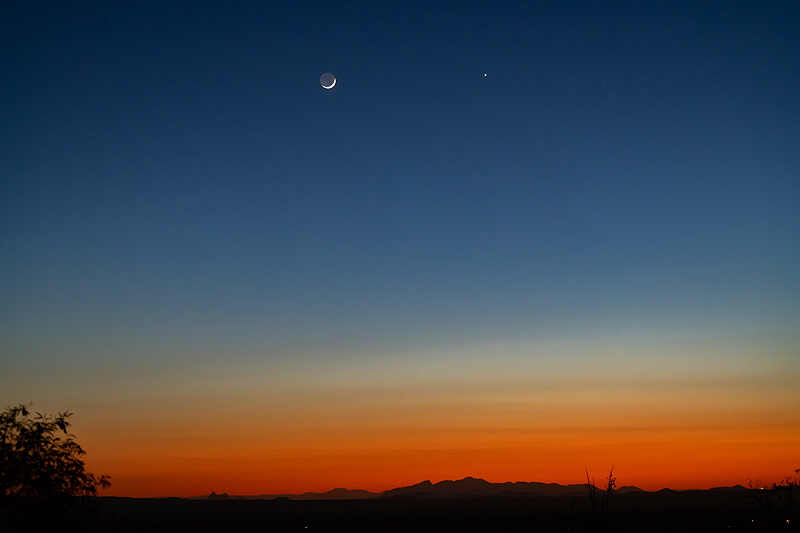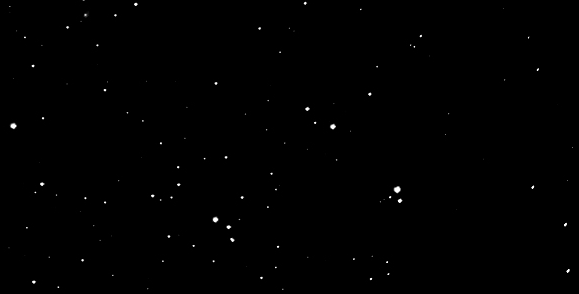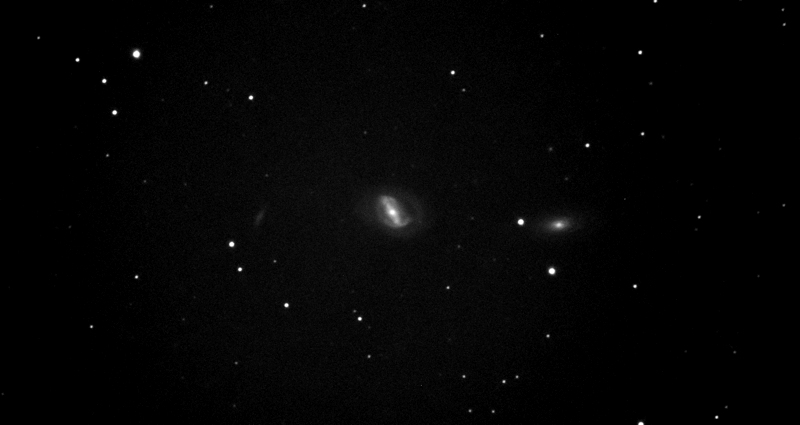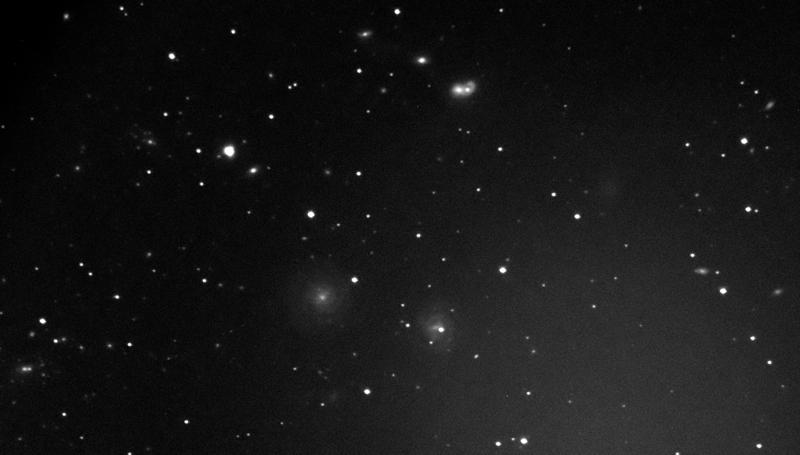Crescent Moon & Venus;
Asteroid Honeycutt (Mag. +16.6); Galaxies
Posted: 18 April 2018
Sunday, 15 April 2018, unforecasted clouds arrived mid-day. Winds also returned in the afternoon. Monday, 16 April, dawned cloudy. About sunrise I saw this Javelina, who was eating a quail block:

Strong winds arrived again on Monday mid-day. Tuesday, 17 April, was hazy and windy. But it was clear so opened the observatory Tuesday evening.
|
Open: Tuesday, 17 April 2018, 1843 MST Temperature: 78°F |
Session: 1222 Conditions: Clear, hazy, breezy |
Equipment Used:
12" f/8 LX600 w/StarLock
2" 24mm UWA eyepiece
2" 30mm eyepiece
Focal Reducer
Camera:
D850 DSLR
iPhone 8 Plus
1852 MST: crescent Moon visible to naked eye.
1853 MST: LX600 ON, StarLock OFF, High Precision OFF.
1857 MST: sunset. Viewed the Moon, 102X.
Calm now.
1935 MST: Crescent Moon with Earthshine, Venus, and mountains to the west, taken with the D850 DSLR:

Mounted the iPhone 8 Plus on the 2" 30mm eyepiece for this afocal 81X image of the Moon taken with NightCap Camera (ISO 64, 1/20sec):

1946 MST: viewed the crescent Moon and Earthshine, 81X and 102X.
Began preparing for faint asteroid imaging. Mounted the D850 DSLR at prime focus + focal reducer. Slewed to the star Denebola and began waiting for the end of Astronomical Twilight (2021 MST). The asteroid target for this session was Asteroid 5536 Honeycutt (Mag. +16.6), named for Dr. Kent Honeycutt, who was a professor in the Indiana University Department of Astronomy when I was an undergradute student in Astrophysics in 1966-70. I got to see Dr. Honeycutt again during a visit to the WIYN telescope at Kitt Peak in 2002 (he is on the right):

I focused on Denebola. 2017 MST: Wi-Fi ON. Used SkySafari 6 Pro on the iPhone to GOTO Asteroid Honeycutt.
2020 MST: Wi-Fi OFF, StarLock ON.
2021 MST and 2121 MST: took StarLock autoguided 5 minutes exposures at ISO 6400, White Balance 4000K. Here is Asteroid Honeycutt. The "blinked" image shows Honeycutt moving in the one hour interval.


2126 MST: StarLock OFF. Removed the focal reducer.
2138 MST: High Precision ON. Focused on a star. 2141 MST: StarLock ON. Began imaging some galaxies at prime focus, StarLock autoguided, 5 minutes exposures, ISO 6400, White Balance 4000K:
PGC39934, NGC4290, & NGC4284

Mouseover or tap on image for labels
NGC4411 & other galaxies

Mouseover or tap on image for labels
2200 MST: dome OFF.
NGC4565 (Needle Galaxy)

Mouseover or tap on image for labels
NGC4302 & NGC4298

Mouseover or tap on image for labels
2222 MST: StarLock OFF, High Precision OFF. Ended imaging.
Viewed the galaxies NGC4298, NGC4302, and NGC4565, 102X.
2236 MST: dome ON.
Viewed Jupiter, low in the southeast, 102X. Three moons visible. The shadow of the moon Europa was visible on the planet's disk near the limb.
2242 MST: LX600 OFF.
|
Close: Tuesday, 17 April 2018, 2252 MST Temperature: 49°F |
Session Length: 4h 09m Conditions: Clear |
On my previous report I mentioned that the D850 DSLR has a built-in intervalometer that I could use while waiting for the Vello ShutterBoss III Wireless Remote to return from warranty repair. The D850 intervalometer will work for some types of astrophotography, but the exposure length is limited to the shutter speeds the camera provides. For the D850 the longest exposure would be 30 seconds when using the built-in intervalometer. So using an external intervalometer like the ShutterBoss is still required for exposures longer than 30 seconds. Since I was successful using the D850 touchscreen to start/stop long exposures without inducing any image vibrations I will continue to use that until the ShutterBoss arrives.
Comments are welcome using Email. Twitter users can use the button below to tweet this report to their followers. Thanks.
Cassiopeia Observatory Home Page
Copyright ©2018 Michael L. Weasner / mweasner@me.com
URL = http://www.weasner.com/co/Reports/2018/04/18/index.html
